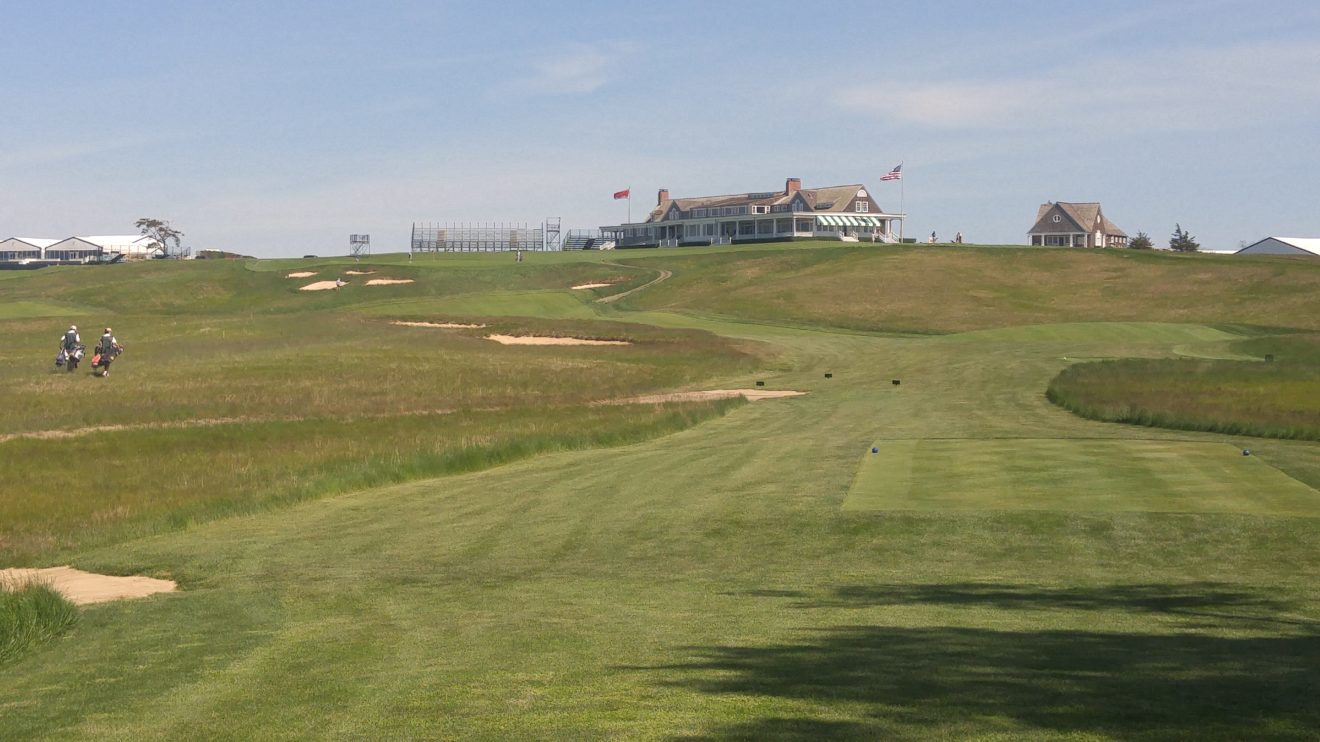SOUTHAMPTON, NY -- You just kind of happen upon Shinnecock Hills Golf Club.
My Google Maps directions had me make a left-hand turn down a street that seemed destined to weave me through some bizarre industrial park, then find my way into a top-five golf club in the world. I figured it was a way to save a few minutes in the standard-issue morning Hamptons traffic jam.
Nope. Not but 10 seconds later, I've driven up a hill, and I'm staring at the first golf clubhouse in the United States.
A public road runs through the Southampton club and the 2018 host of the US Open. Passers by get a view of No. 10 tee, the clubhouse, the ninth green, and most of Nos. 12 and 13, before driving out of sight of the club -- only to be seconds away from driving through National Golf Links of America and right near 2013 US Women's Open host Sebonack Golf Club.
I'd never been to the Hamptons, much less to Shinnecock, but I know there's money in them dunes, so I kind of expected to have to arrive at some checkpoint, where I'd tell a fancy-but-unofficial guard my name, show my driver's license and wait nervously before given very specific instructions on where to park, how to walk and when to smile.
Didn't work out that way. I dropped off my bag for US Open preview day and went into the parking lot. The staff, from the moment I stepped on property, could not have been nicer or more welcoming of some unknown scrub scribe looking to get in 18.
The USGA and their championship host clubs welcome media for a day, a few weeks out from the national open, to come play the course on which will unfold a major championship. It's different, of course. I didn't play from the tips, as playing from 7,445 yards would be a miserable time. The greens weren't yet to US Open speed, but that drying-out process will start in the next 14 days. But pretty much everything else was the genuine article.
This US Open is going to be dramatically different than the one last played here in 2004, back when Retief Goosen took just 11 putts on the final nine holes to hold off Phil Mickelson and win his second (and final) Open. That Sunday, the Tom Meeks-led setup team was lambasted for leaving the par-3 seventh in such shape crews had to water the green in between groups to get balls to even come close to holding the putting surface. The best player that week won, but Shinnecock Hills didn't look its best.
Fourteen years later, Mike Davis has evolved beyond ingenuitive setup man and has become the USGA's Executive Director and CEO. The upcoming week in June is the culmination of a decade-plus mea culpa for that low moment.
"In looking back at that 2004, even though there were parts of that final day, it was a magnificent day with Retief and Phil Mickelson coming down to the end," Davis said. "There are parts that I think we learned from and so I think we're happy that we have a mulligan this time. It was certainly a bogey last time. In fact maybe even a double bogey and equitable stroke control perhaps kicked in. But anyway it's great to be back to one of the greatest courses on the planet earth and I think that if you can't tell we are incredibly excited to be back and it is, as I say, a national golf treasure."
For Shinnecock, this Open is a reintroduction of sorts, as the club is able to show off the fine restoration work shaped by Bill Coore and Ben Crenshaw to bring back the intended design, shot values and aesthetic William Flynn had in mind when he created the current course in 1931. The club entrusted the USGA to scoop up acres of renovated fairway space in favor of sodding in thick, nasty fescue to frame the space to challenge the best in the world. It's a sign of the inherent trust the club and the governing body must have.
"Our club is deeply proud and respectful of our role in the founding of American golf and the common heritage that we share with the United States Golf Association," said Shinnecock Hills club president Brian Pickett. "One hundred and twenty-two years after our relationship began, we have never ever been closer, and they are the one and only partner we would ever entrust to present Shinnecock to the world."
The new-age US Open setup is a blend of philosophies. At the core is still the USGA's copyrighted tagline, offering Golf's Ultimate (nee Toughest) Test to 156 elite players -- half invited through exemptions, half earning their spot through qualifying. However, in recent years, the USGA has taken care to respect the architecture of its host clubs.
After tightening a sub-7,000-yard Merion in the name of protecting the club and par, the Open setup at Pinehurst No. 2 was a full embrace of the width created by another Coore-Crenshaw restoration, contemporaneous to the one at Shinnecock. Martin Kaymer got good breaks and a good draw, and he dominated his way through to a validating second major title.
Chambers Bay was a miss a year later. The agronomy teams misjudged the fescue grass on the greens, leaving spotty surfaces (except for the redone seventh green) that infuriated top players. However, the USGA pretty well let the Robert Trent Jones Jr. design breath with its wide-open spaces off the tee, letting the ground work for the players on the approach.
Oakmont is Oakmont, and the Pittsburgh-area stalwart held up despite lots of rain. The greens were taken to their max speed, and the whole thing would have been well-received were it not for that little incident on No. 5 involving Dustin Johnson.
Keeping with the hit-and-miss trend, Erin Hills proved a controversial venue last year. Most of the focus was on Brooks Koepka's 16-under winning total, but it was played as a par-72 because the concept of a par-70 7,800-yard course sounded insane. This was the first introduction for millions of golf fans to modern width and angles prioritized by designers looking to give amateurs a better chance and more fun. The USGA learned in the backlash that golf fans want to watch fun, but not too much fun, in their US Open. The Open is bloodsport, and the most a windless, defenseless Erin Hills could do to the field was given them paper cuts. Even if the architecture was riveting, that's not why most people watch this championship.
So, here's Shinnecock Hills. It's been restored in line with the new-but-old modern architecture, a full-blown repudiation of the Robert Trent Jones Sr. era of tree-lined fairways, easy bogeys and tough pars. Members want to have choices, not mandates. However, the USGA wasn't willing to embrace full width, so they went with slim-fit styling for this Open. The USGA trucked in thousands of rolls of fescue sod, turning even wider fairways into smaller targets averaging 41 yards wide -- still a 50 percent hike over the 26-yard average from 2004 but also about 20 yards narrower than what members have seen since the renovation.
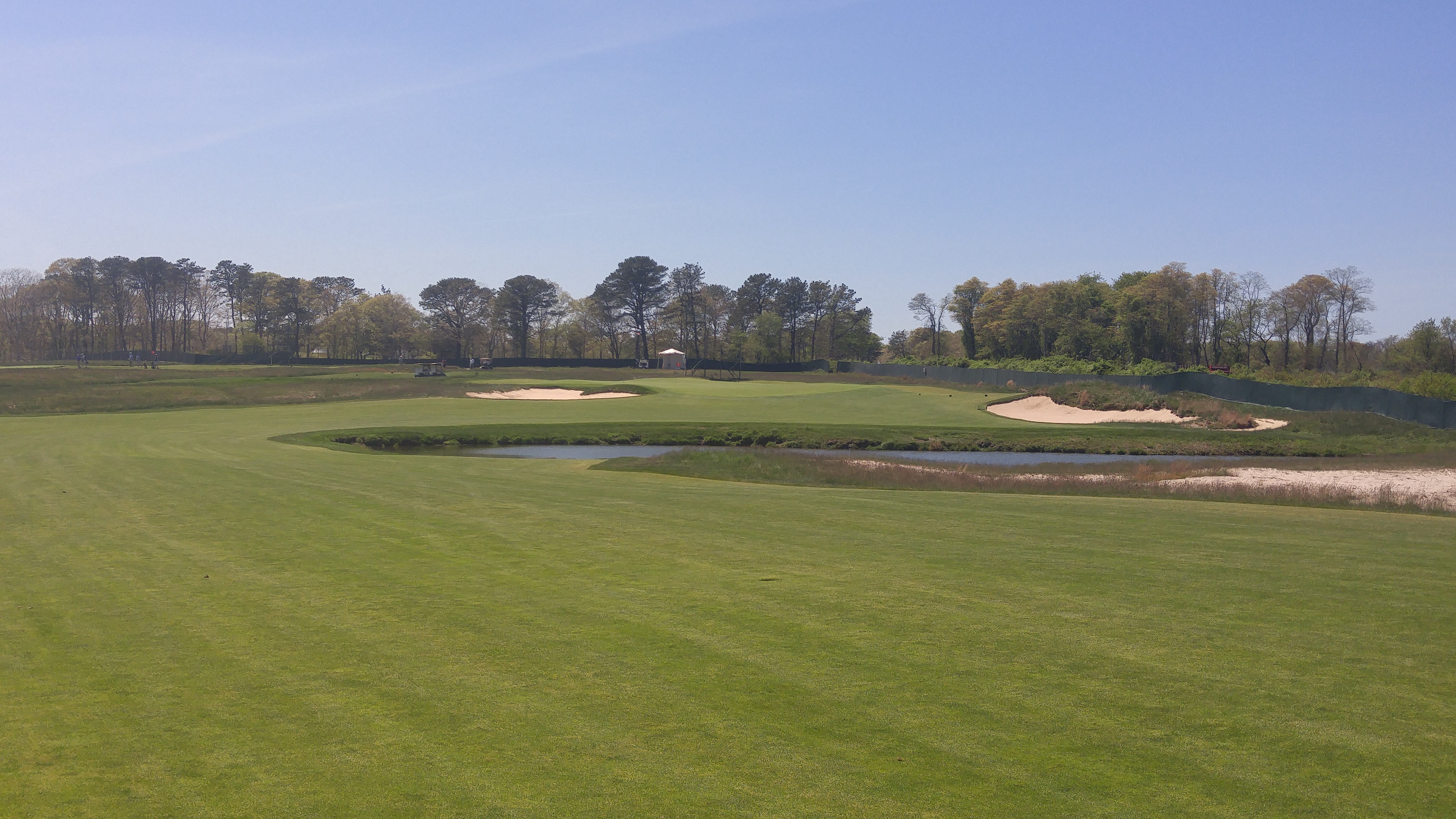
For those triggered by the thought of wide-sounding fairways at a US Open, relax. The small swab of intermediate rough, maybe a few paces wide at most, is about 3 inches deep now. Take another step, and a player will find themselves in foot-high, thick, well-fed fescue rough. I found it three times during our round, and despite my strength and swing speed, all I could do was put a wedge on the ball and look helplessly as the ball went out practically sideways into the fairway. It's a full-shot penalty. Even if it's thinned out some, or chopped down a bit, it'll still be very nasty.
The right miss -- at least off the tee -- is big. Beyond the trucked-in nastiness, Shinnecock's natural, long grown-in fescue is more of a 50-50 proposition. There will be good lies and some downright impossible, like when I found my ball nestled in the middle of three tufts of grass just off the sixth fairway. My only play other than taking an unplayable was to top the ball squarely into the only water hazard on the course. That was the outlier, however, as most times my big misses found a reasonable lie to advance the ball, if not get to the green with a knuckling approach.
Every hole at Shinnecock is unique. More holes dogleg right than left (eight to three, by my estimation), but the severity and width vary wildly. Sometimes a player won't be able to see the fairway curl from the tee box. Some tee shots will obscure the true width of the fairway. Others are actually as small as they look.
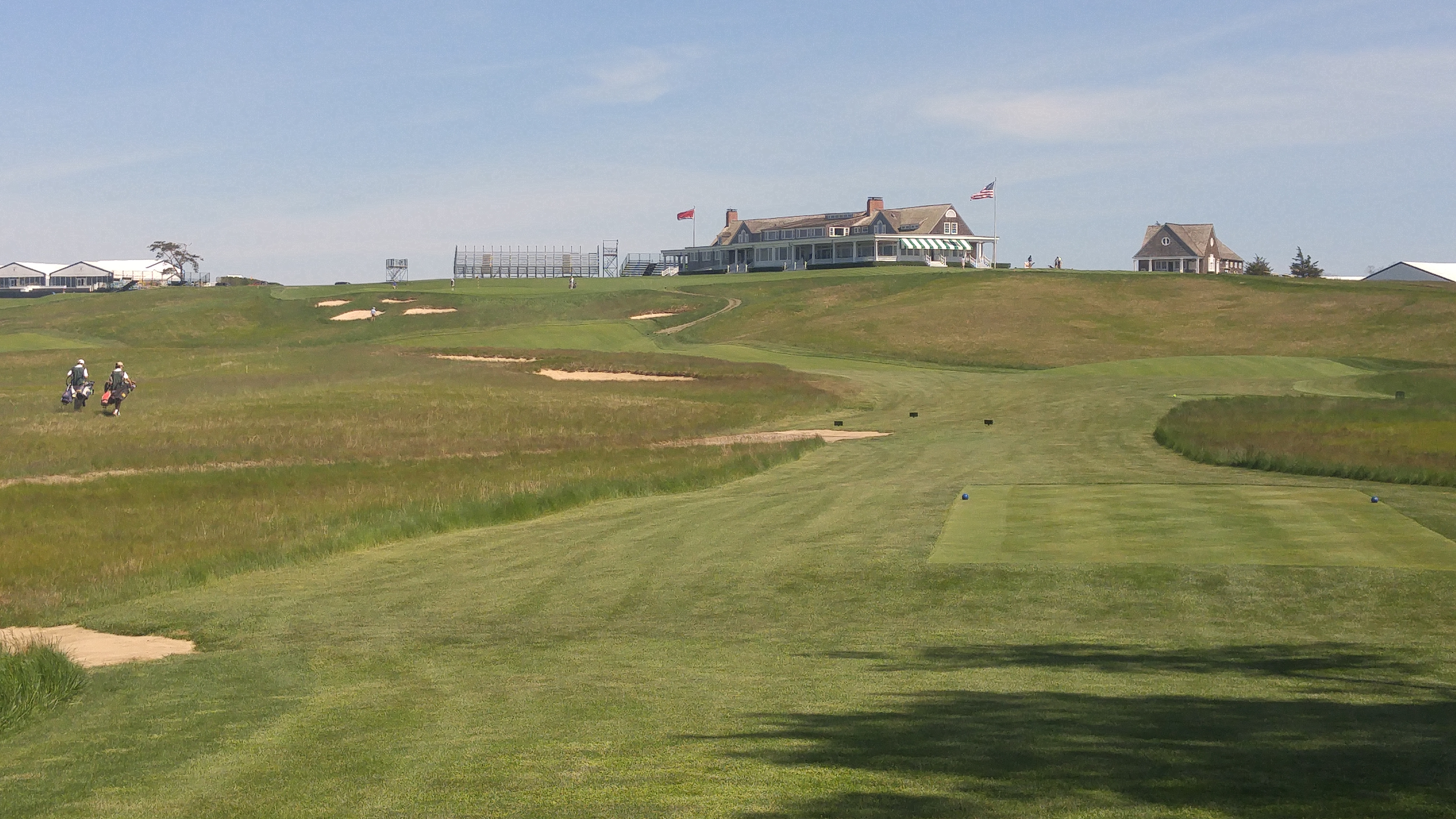
Going long is almost universally a bad idea, as balls will likely careen down closely-mown areas to force players to execute demanding, creative recoveries. For the misses that don't wind up in those tight spots, the deep bunkers will require an aggressive approach.
The putting surfaces themselves are surprisingly large, but their size belies the actual space a player will be able to put the ball and still hold the green with a reasonable chance at par.
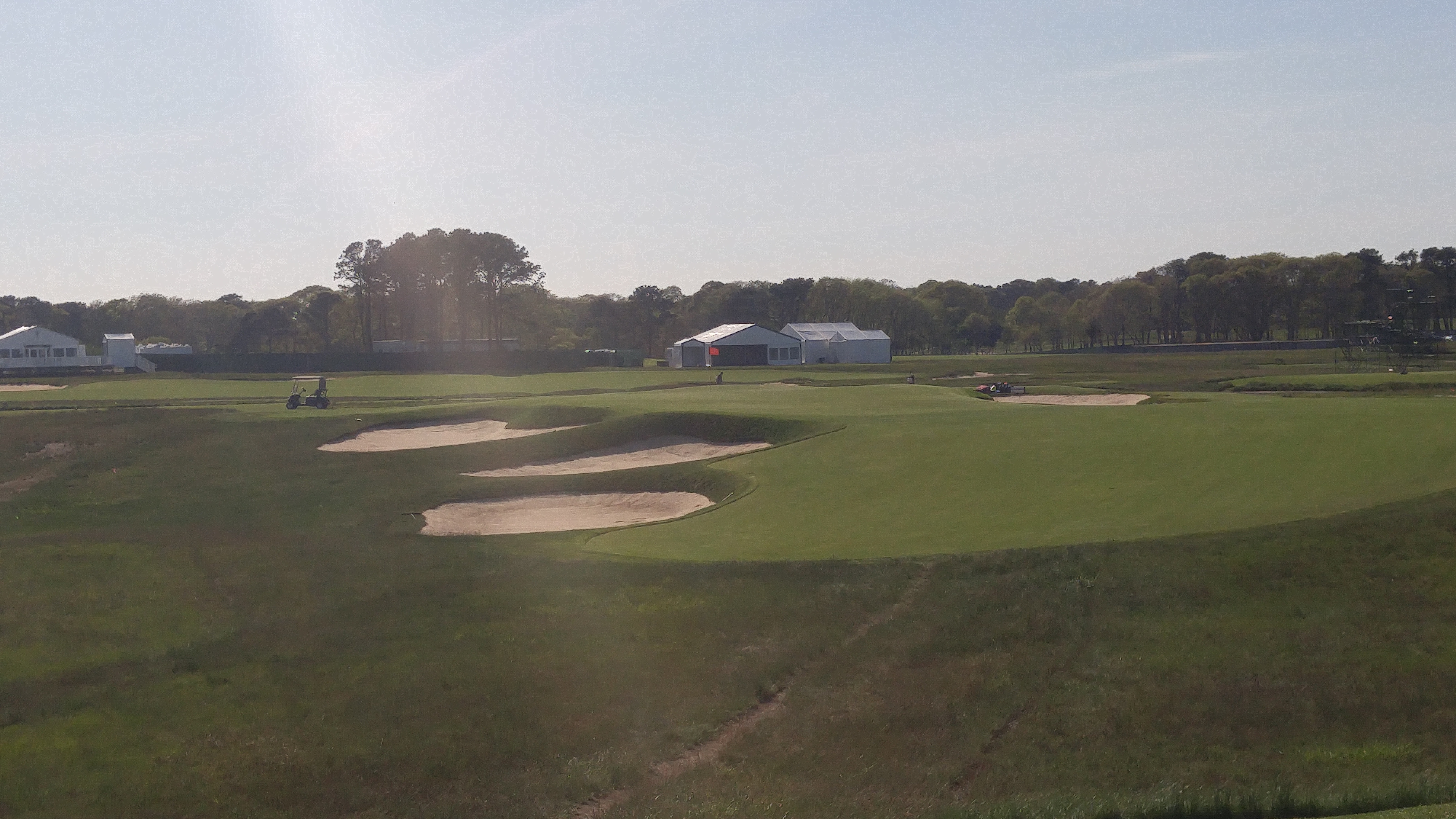
After a somewhat comfortable first hole, the par-3 second, which can play as long as 255 yards, will pique the player's attention with its uphill, downwind tee shot.
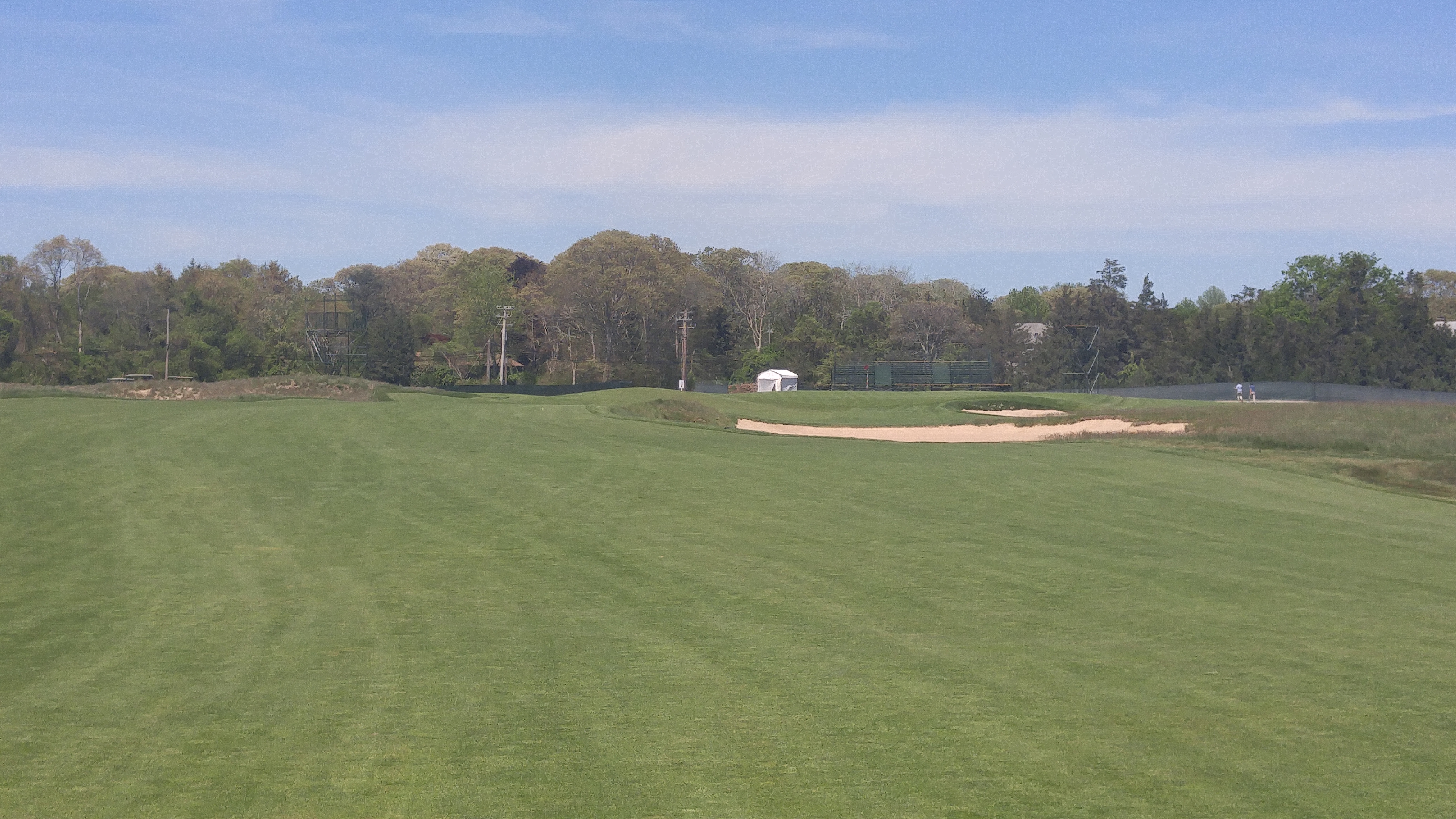
The fifth is the only par 5 on the front, and the second shot best not go long, or a possible 3 could easily become a 6 or 7. The seventh will be fair but not fun as the week advances and the greens dry.


The uphill par-4 ninth plays to a much wider fairway than 2004, but the short stuff to the right offers little help in trying to hit a green massively uphill which slopes back to front.
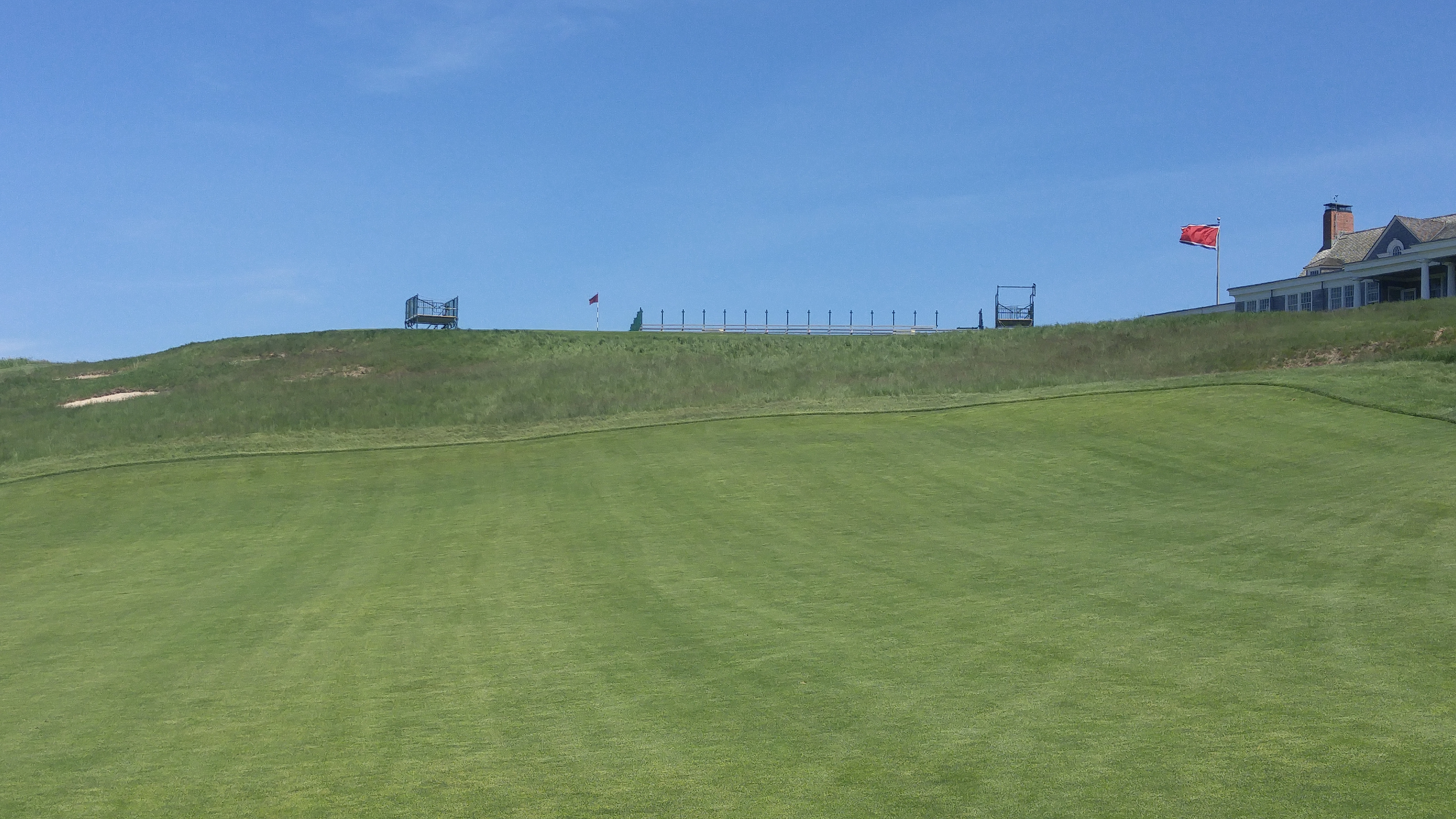
No. 10 is probably the toughest hole on the course, inviting the desperate to hit driver and take on a slope that will carom a ball potentially into the deepest of deep stuff. A safe tee shot will leave a mid-iron approach into a table-top green offering the false appearance of relief for a player who goes long.
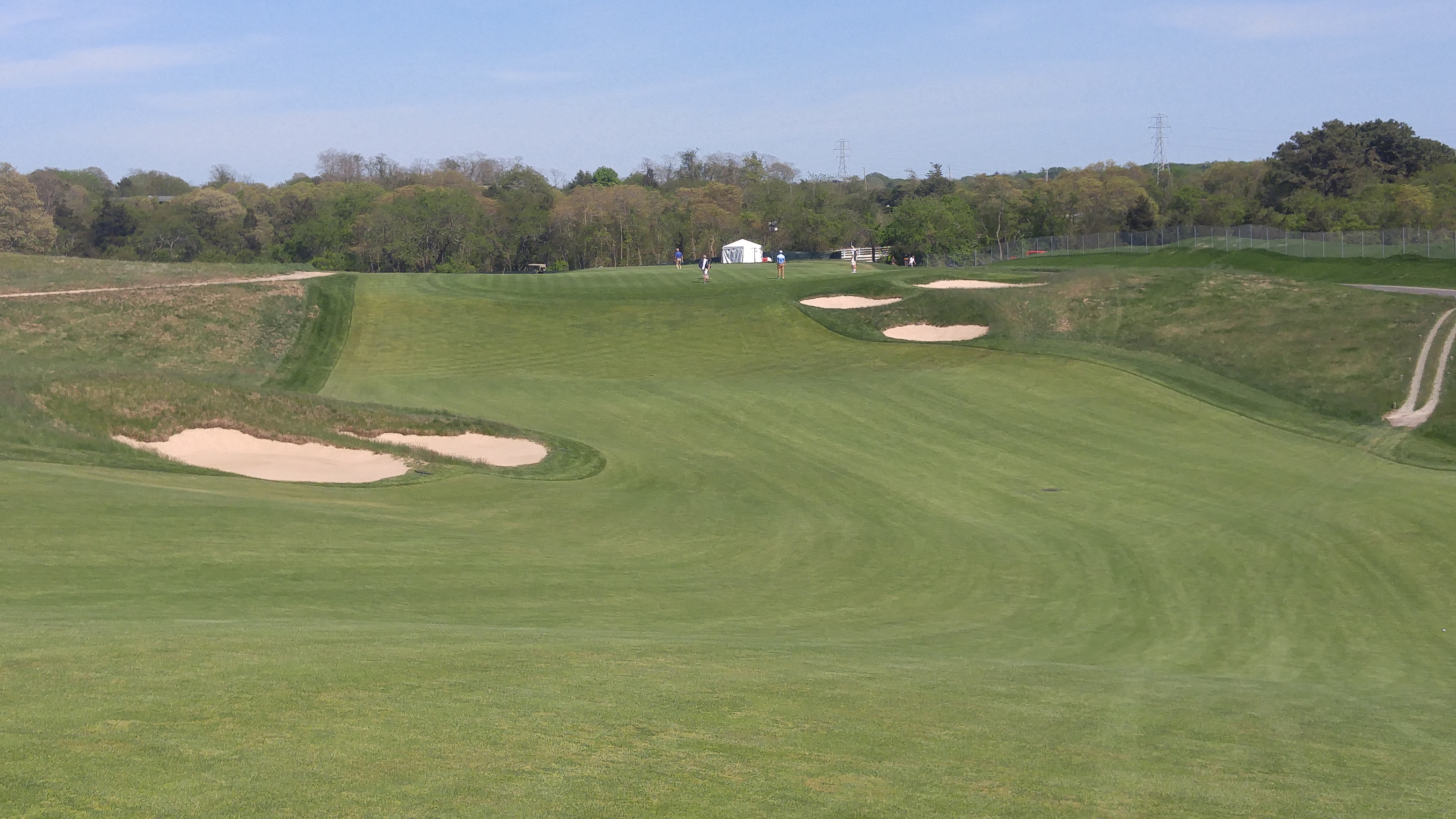
The 11th is the best par 3 on the course, offering an obscure view of the front of the green framed menacingly by a deep greenside bunker short and right that will be the site of lots of fried eggs and double bogeys.
The best hole on the back, other than No. 18, is the 14th. It's a straight hole, but there are two framing bunkers to make players choose how to hit the fairway. Draw it off the shorter bunker to the right, and the risk is finding impossible rough. Cutting it off the left-side bunker farther out on the left and find a better angle to the putting surface.

The finishing hole can ruin a fantastic round. At this point, beaten down by a potential two-club wind all day, a player might let up and play to the safe right side of the dogleg left. If they do, they'll invite the easiest bogey of the day. One last aggressive drive to the left corner will open up a much shorter approach, even if the sidehill lie will encourage a pushed second shot away from the putting surface.
If everything goes the way the USGA would like in the next several weeks, and the wind blows most of the time as it normally does at Shinnecock Hills, an under-par winning score is hard to conceive. It's too easy to make a straight-forward double bogey here or there, and there aren't that many birdies in wait.
Of course, the softer the golf course plays and the less wind there is, the more likely a winning score on this par-70 test could be under par. And there will be plenty of fans disappointed by Erin Hills hoping par holds up this time.
In truth, par doesn't matter. What matters is a golf course is setup to identify the best players in the world, offering a robust test examining every aspect of a golfer's mental and physical gifts. The modern US Open is not solely a straight-driving contest. It has evolved, as it should with architecture.
Shinnecock Hills will be wider, yes, but space creates room for doubt. And the golfer will be punished, time and again, when they make mistakes. But for the player that can see the shots with clarity, play them with precision and catch a few breaks along the way, they will earn an opportunity to win the US Open.

